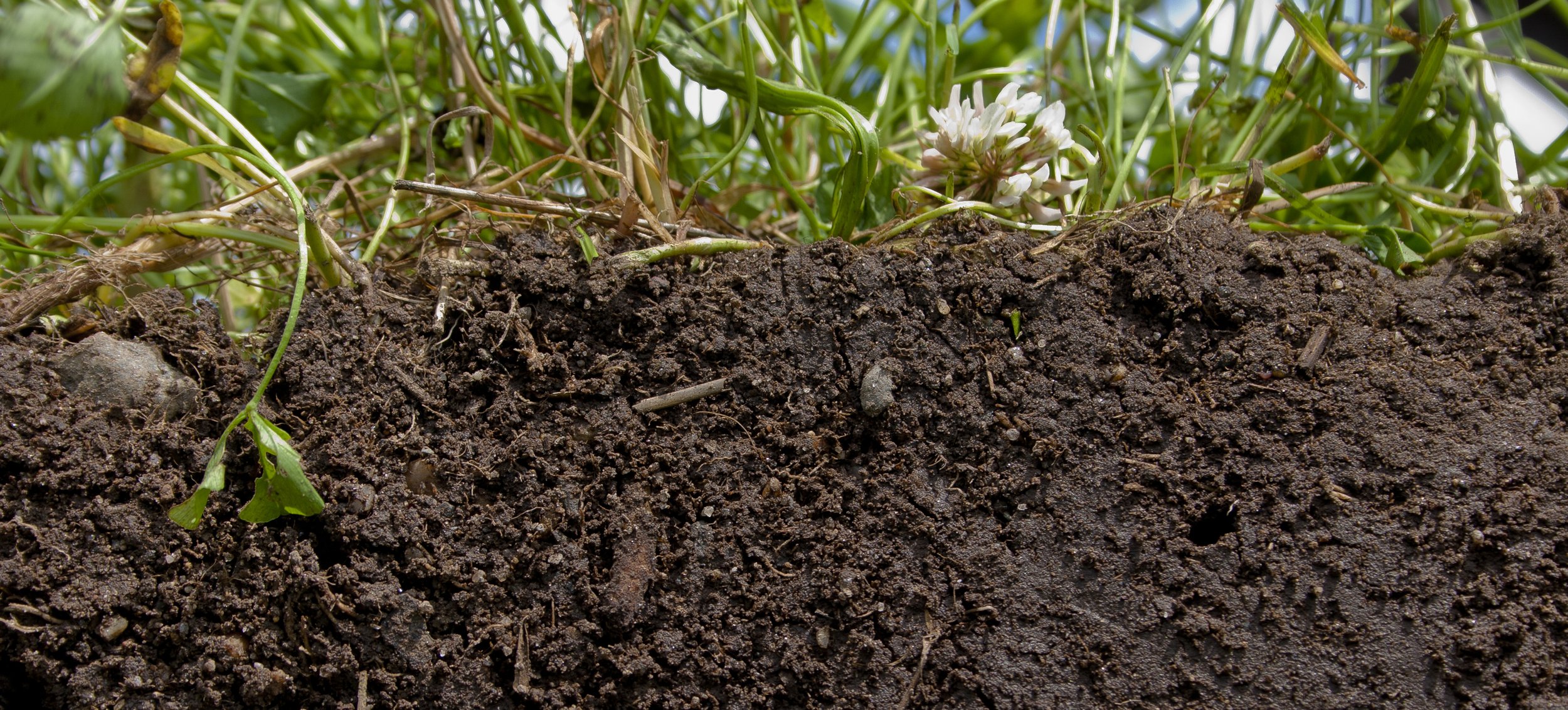
PRINCIPLES OF SOIL HEALTH
What Is Soil Health?
Soil health is “the continued capacity of soil to function as a vital living ecosystem that sustains plants, animals, and humans” (USDA, NRCS). Achieving soil health requires a systems approach that includes five principles: Limited Disturbance, Soil Cover/Armor, Living Roots, Diversity, and Integrating Livestock.
Optimize Disturbance
Although certain types of disturbance can have positive impacts, such as managed adaptive grazing, many physical, biological, and chemical disturbances reduce the soil’s ability to function.
Physical Disturbance: The most significant form of physical disturbance is tillage. Tillage decreases the overall pore space in soil and destroys the glues (aggregates) that create soil structure. Tillage results in water erosion, wind erosion, standing water, surface crusting, and soil organic matter depletion. Cattle trails and loafing areas or prolonged grazing also contribute to physical disturbance.
Biological Disturbance: Plants harvest sunlight and carbon dioxide to produce sugars that feed the soil biome through root exudates. Overgrazing is the primary method of biological disturbance. Removing too much of the plant through grazing limits both the amount of soil armor above ground and the amount of biomass below ground. Other forms of biological disturbance include the introduction of invasive species from bare areas, the use of monocultures, and fallow. Each of these causes biological imbalances that can negatively affect soil function.
Chemical Disturbance: Overapplying fertilizers, herbicides, pesticides, and fungicides can harm the life within the soil, negatively affecting soil structure and function.
Soil Cover/Armor
Keep the soil covered as much as possible throughout the year to protect the soil surface from erosion, direct sunlight, drying and crusting, and extreme temperatures. Most of the biological activity in soil occurs in the top few inches, which is why it is important to protect the soil surface.
Keeping soil covered:
Controls wind and water erosion by dissipating energy from raindrops and wind.
Prevents moisture evaporation by shading the soil surface.
Suppresses weed growth by limiting sunlight available to weed seedlings.
Moderates soil temperature by acting like shade in hot weather and a blanket in cold weather.
Increases soil life by providing food and habitat for macro- and microorganisms.
Diversity
Strive for diversity of both plant and animal species. Diversity enhances ecosystem function and increases soil and animal health. To maximize the carbon and energy going into the soil, it is important to have a diverse mix of plant types – warm season grasses, cool season grasses, warm season broadleaves, cool season broadleaves, high carbon species, low carbon species, legumes, high water users, and low water users.
Diversity:
Increases rainfall infiltration
Increases nutrient cycling
Increases biodiversity – above and below the soil surface
Reduces plant diseases
Reduces pest pressure
Ways to incorporate more diversity:
Longer crop rotations
Cover crops
Inter-cropping
Relay cropping
Perennial species planting
Biological amendments
Living Roots
Maintain a living root as much as possible throughout the year. Soils are most productive when soil microbes have access to living plant material. Living roots can be from a commodity crop, cover crop, or forage crop.
Living roots:
Provide carbon and organic substances to the soil food web by harvesting sunlight and carbon dioxide.
Build soil aggregates and pore spaces to improve soil infiltration.
Provide soil cover/armor.
Create opportunities to integrate livestock.
Add crop diversity.
Form symbiotic relationships with mycorrhizal fungi and bacteria to acquire nutrients and increase aggregate stability.
Livestock Integration
Nature does not function without animals. Proper grazing management improves soil health. Well-managed grazing recycles nutrients through improved manure distribution, reduces plant selectivity, and increases plant diversity. The most important factors in grazing systems are allowing adequate rest for the plants to recover before grazing again to avoid overgrazing. Overgrazing reduces soil armor, causes soil compaction, and leads to decreased root biomass and microbial activity.
Ways to incorporate livestock:
Winter and fall grazing cover crops and annual crop residues.
Summer grazing a full-season cover crop.
Second grazing of a full-season cover crop during the fall or winter.
Winter feeding on hay fields by rolling out bales or bale grazing.
Include perennials for grazing as part of a crop rotation.
Remove fallow and replace it with a high biomass cover crop that will be grazed during that period.
* Some information courtesy of the Kansas Soil Health Alliance.
SOIL HEALTH Q&A
Do you have a soil health related question that another farmer in North Carolina may be able to answer? Ask us and we will present it to our members to determine if another farmer has dealt with and overcome a similar challenge.








